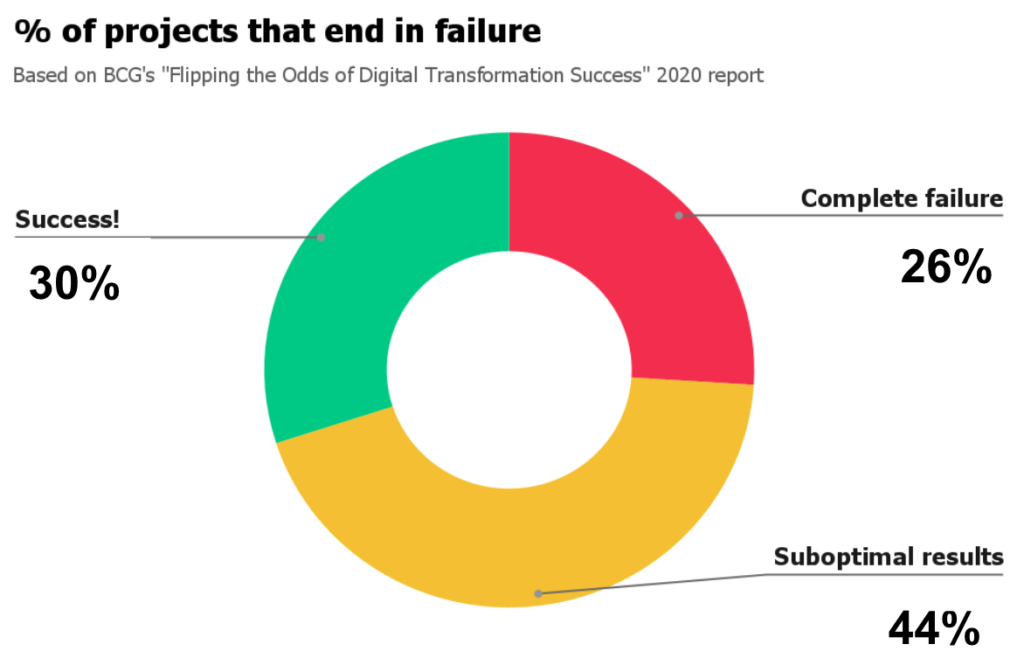
Structure your COE for success
What is a Salesforce Center of Excellence?
A COE is not a team of people who sit centrally and support Salesforce. It is a set of core principles – a management framework – that coordinates the implementation of Salesforce. Based on the size of the implementation team, and the complexity of Salesforce (one or multiple orgs), the structure and responsibilities of the COE will be different: centralized, decentralized, hub, and spoke. There is no one right way. The COE applies best practices.
There are 13 pillars – not all of which need to be in place for the smallest, least complex implementations. In the list below those pillars that are the bare minimum have an asterisk. The great news is that many of you reading the list will already be doing many of these activities, but you probably are not calling it a Center of Excellence and you may not have formalized the approach.
Here is the overall scope or key pillars of a COE:
- Vision: Strategic vision and direction for Salesforce for both the business and IT.
- Leadership: Steering Committee and key sponsors in business and IT.
- Governance: Overall control of strategic direction, business cases, investment and risk management.
- Change control: Management of changes to all aspects of the project.
- Methodology: The implementation methodology. Covers people, process, and technology, which includes business analysis, DevOps, and adoption.
- Standards: includes standards for business analysis, org documentation, metadata naming, coding, testing, communication, change management and training.
- Metadata management: Control of the Salesforce metadata across the deployment pipeline.
- Architecture: Technical architecture of Salesforce and how it relates to the integrated systems and InfoSec.
- Security: Security needs to be architected in from the start.
- Change management: communications, organizational change, and training to get Salesforce adopted.
- PMO: the Project Management Office that manages the COE activities.
- Tooling: Platforms/apps/ tools used to support the project including DevOps, backup, data quality, and Change Intelligence.
- Innovation: Building out Salesforce prototypes to show the “art of the possible”. This has become even more important, now that AI is showing so much potential.
The purpose of a Salesforce COE
The power of Salesforce is the underlying metadata architecture. It enables changes to be made quickly, which allows the business to be agile. But without the framework that a COE provides, there is a risk of mistakes: inconsistent business analysis, ambiguous requirements, confusing documentation, and changes that break the org. All these impact the user experience, reduce adoption, and increase rework and, therefore, cost.
AI offers the opportunity to deliver personalized customer experiences by leveraging the data in Salesforce. A COE provides the guardrails and governance so that the teams can exploit the innovation of AI without compromising trust.
Benefits of Center of Excellence
A Center of Excellence provides the foundational governance required to make any business transformation project successful. The track record for these projects overall – not just for Salesforce – is very poor. Only 30% of projects are deemed successful.

This is a well-researched topic and the data is recent.
- 87.5% of digital transformations, fail to meet objectives (3 Stages of a Successful Digital Transformation, Harvard Business Review)
- 26% were deemed total failures (Flipping the Odds of Digital Transformation Success, Boston Consulting Group)
- 69% of spend is wasted (Digital Transformation Is Not About Technology, Harvard Business Review)
Can a COE change this? It certainly can help, based on an Accenture report from senior executives in 14 industries, which uncovered the root of project failures. The survey found that the top 3 reasons why a major change initiative was substantially delayed and/or negated were:
- 64% Lack of buy-in that change is necessary
- 44% Lack of skill or experience with change management
- 44% No senior management champion
All of these are addressed by having a COE in place.

Roles and responsibilities
The COE pillars may be delivered by a centralized team – for major enterprise multi-org implementations – or they may be part of the day job for the core team. The scale, complexity and strategic importance of the Salesforce implementation determines the resourcing and how many of the pillars are supported by the COE.
We’ve tried to give some perspective in the diagram below. The definition of “size” is by no means prescriptive, but an indicator of strategic importance.
- Small – Solo or small Admin team with limited developers. Fewer than 100 users
- Medium – Team with BA, Admin and Developers. SI engaged. External integrations. 100-1000 users
- Large – Multi-org, multi-cloud. 1000+ users.
The colors of the circles indicate how important it is to have that capability in place (white: not required, blue: needed, purple: mandatory). Ideally, every implementation has all of them, but we understand the trade-offs of running Salesforce. AI changes the risk profile so you can see the pillars impacted in red are suddenly more important. The scope of each pillar was set out in the first section of this post.

Types of Centers of Excellence
A COE can be created to be the central point of support and direction for any initiative. You could have a RevOps COE (a business process), an AI COE (a technology/approach), or a Salesforce COE (an application). There is a risk that the term COE is misused as it describes a support function and therefore has a very narrow focus, rather than being a broader concept that helps drive the success of an overall implementation program.
In this case, we are describing Salesforce. So with this in mind, these are the 3 ways that a COE can be structured – centralized, federated (decentralized) or hybrid. We find that organizations start with a centralized model – one team that establishes standards and protocols. With larger customers, in order to support multiple business units, business processes, or different industries/markets (often with multiple orgs), the centralized model usually evolves into a federated or hybrid model.
Centralized
A centralized model, the most traditional CoE model in the IT world, operates based on one team developing and setting standards. This is needed to be able to establish a COE quickly and maintain a tight end-to-end control to ensure standards are followed. While this type of organization is necessary when companies first start with Salesforce, as implementations start to scale – a centralized model may not be able to scale up with the demand.
As more parts of the organization start to see the benefits of Salesforce, the centralized team can become farther removed from the day-to-day operations. IT can then get to a position where it is perceived that the COE is not close to the Operations team’s needs and ongoing pain points. At this point, the centralized model breaks into a federated or hybrid model. This should be resisted until there are clear successes for the COE and it is well established.
The argument from users is that the COE does not support their needs, because they want autonomy and are prioritizing speed of delivery over standards like security, architecture, and documentation. This is short-term gain leading to huge long-term pain, as we see in customer after customer. Without a COE in place, the levels of tech debt will quickly kill the agility of Salesforce. We often see that after 5-7 years, the org is at a point when the teams are considering burning it to the ground and starting from scratch. This is a huge waste and can be avoided with a COE.
Federated or Decentralized
In this model, there are multiple COEs within a company. Each takes the standard approach from the centralized COE. The responsibilities of the centralized COE, changes to be oversight, standards and support to the satellite COEs. The federated approach is popular as it can be focused on the objectives of the business unit, while the central COE ensures that there is overall alignment. The drawback to this method is that as the number of COEs grows, some control is lost.
Hybrid
Often referred to as co-federated, this model has become the most popular. The centralized team builds and grows business function COEs, much like in the federated model, but members of the centralized team may become part of the federated teams to enable quicker and more consistent adoption.
Getting started: Salesforce COE for success
Establishing a Salesforce COE is not easy. You need to establish it early in the implementation when it probably feels like overkill as the overall team is small. But to be able to scale the implementation and deliver results, you need a COE in place. Much of the early work is setting direction, getting executive support, planning, best practices, and setting standards.
I remember an Accenture project I managed, where I went to the Steering Committee and threatened to cancel the project if they didn’t give me the support that was needed to be successful. The key point here is that there was a Steering Committee I could go to. So, establishing who should be represented on it, its charter, and how often it should meet, should be job #1. These are the business sponsors.
When we look at the 13 pillars, there are several that must be in place if there are any aspirations to use Salesforce strategically. There must be a strategic vision and direction for Salesforce that can be articulated by the business sponsor and the head of IT. Identifying the leadership that can give you the support is critical. They will form the Steering Committee and its first job is to sign off the project charter or PID (project initiation document) which sets out the scope, objectives and ROI. The project manager needs to write this document.
Next is putting governance and standards in place. They may be lightweight initially, but they provide the guardrails or guidelines the teams need. This is even more important if the team is remote, offshored, contracted-out, or there is a strong AI component. This is the starting point and should be established before you start to bring on the design and delivery teams.
Summary
Organizations need Salesforce to be in the 30% of projects, that are successful. The Salesforce Center of Excellence (COE) provides a framework of core principles guiding the successful implementation and usage of Salesforce within an organization. This strategic approach ensures a standardized, best practices-driven, and governed utilization of Salesforce, aiming to foster successful adoption across various departments and functions. With responsibilities varying based on the complexity of Salesforce implementations and organizational needs, the Salesforce COE plays a pivotal role in steering the direction, governance, and standardization efforts, thus promoting operational excellence throughout the Salesforce lifecycle.
The purpose of a Salesforce COE extends beyond mere implementation. It serves as the nucleus for driving innovation, standardization, and best practices across the organization, ensuring that Salesforce solutions are effectively managed and continuously improved upon. By coordinating efforts among diverse roles – from business analysts to developers to consultants – the COE enhances the return on investment in Salesforce by establishing standards, governance, and best practices. This centralized approach not only mitigates risks associated with rapid changes but also leverages the potential of AI for delivering personalized customer experiences without compromising trust.
Establishing a Salesforce COE has clear advantages. It addresses the critical challenge of scaling Salesforce implementations without losing the agility and innovation that characterizes successful deployments. By providing a clear framework and governance, a well-structured COE significantly mitigates these risks, thereby enhancing project success rates, user adoption, and overall organizational efficiency.
The COE structure – centralized, decentralized, or a hybrid – depends on the organization’s size, complexity, and strategic importance of Salesforce implementation. Regardless of the structure, the focus remains on aligning Salesforce initiatives with business goals through clear governance, documentation, and a commitment to continuous improvement and innovation. This alignment is crucial for maintaining agility and ensuring that Salesforce continues to deliver value in the face of evolving business needs and technological advancements.
A Center of Excellence needs a Change Intelligence Platform to be effective. Discover how Elements can support your organization’s COE, by reaching out to our team today.
Sign up for
our newsletter
Subscribe to our newsletter to stay up-to-date with cutting-edge industry insights and timely product updates.

Ian Gotts
Founder & CEO10 minute read
Published: 26th April 2024






